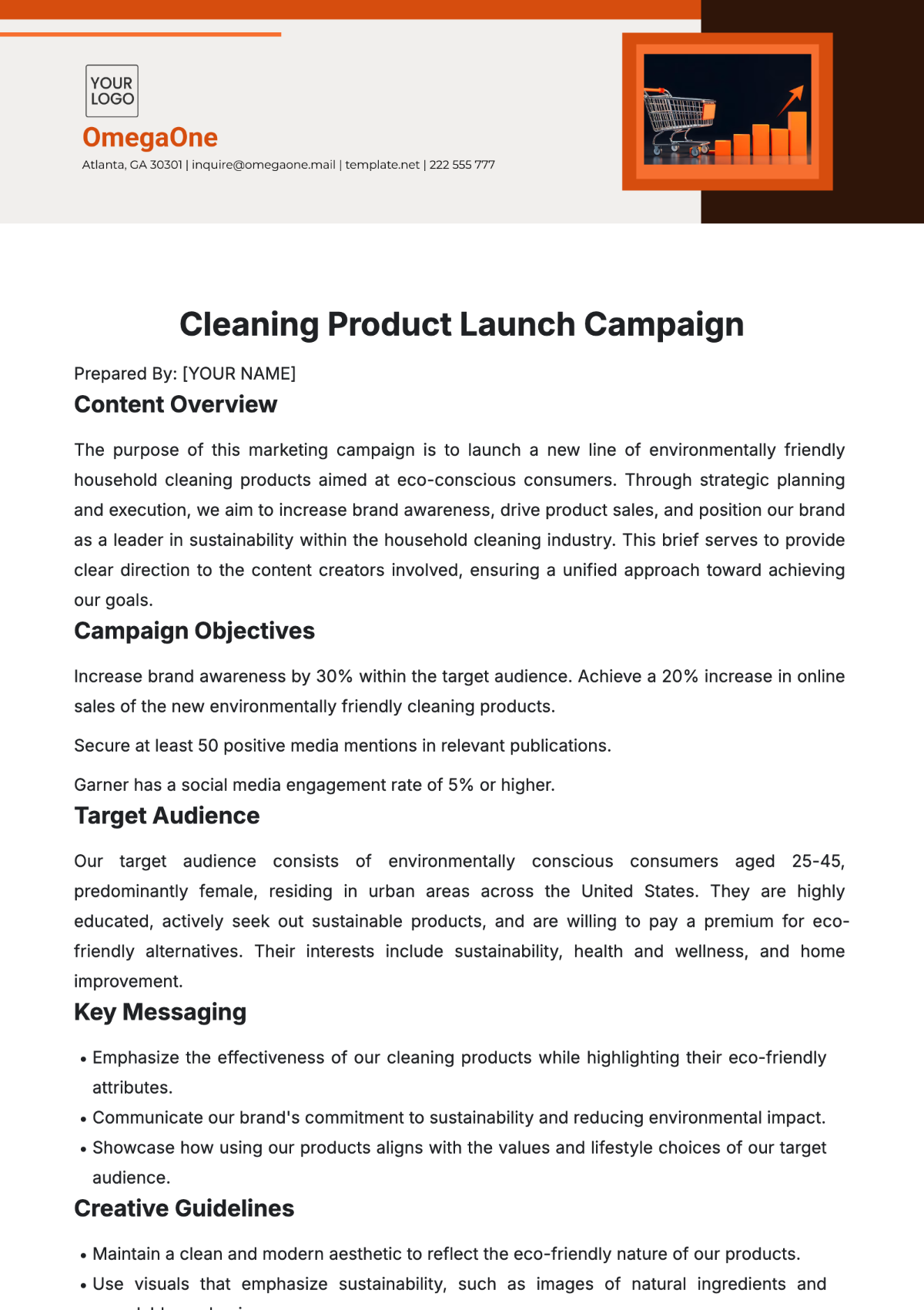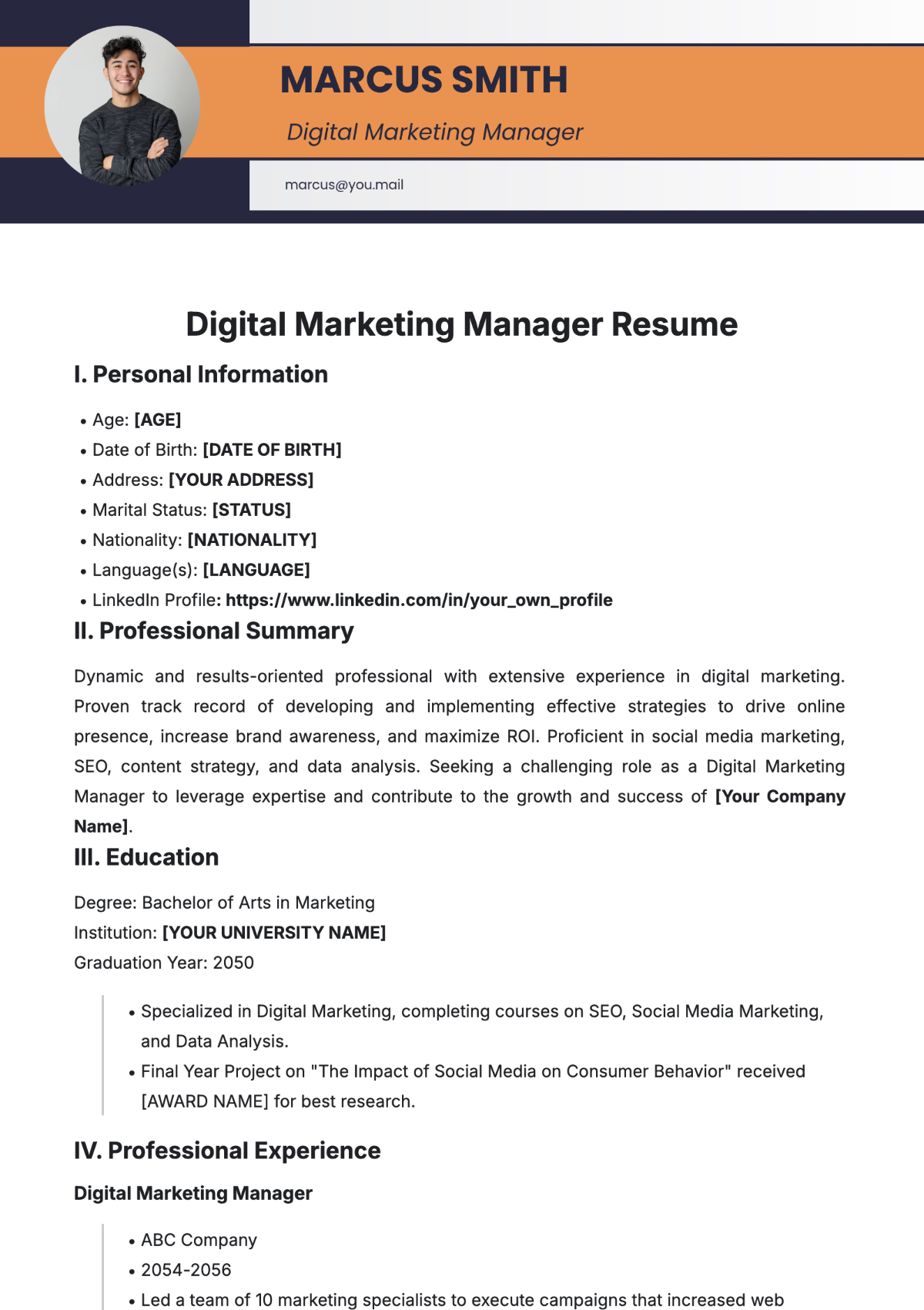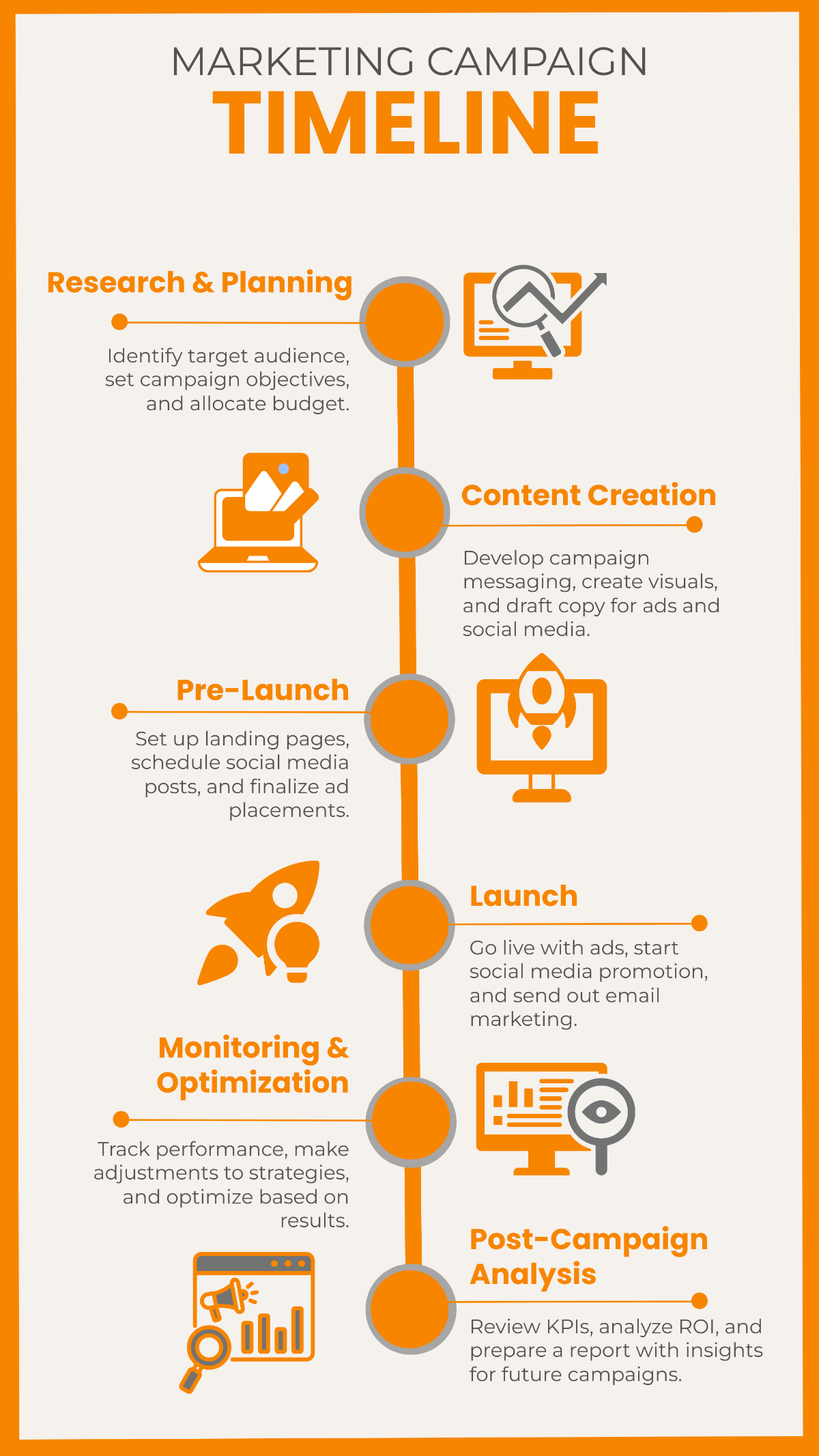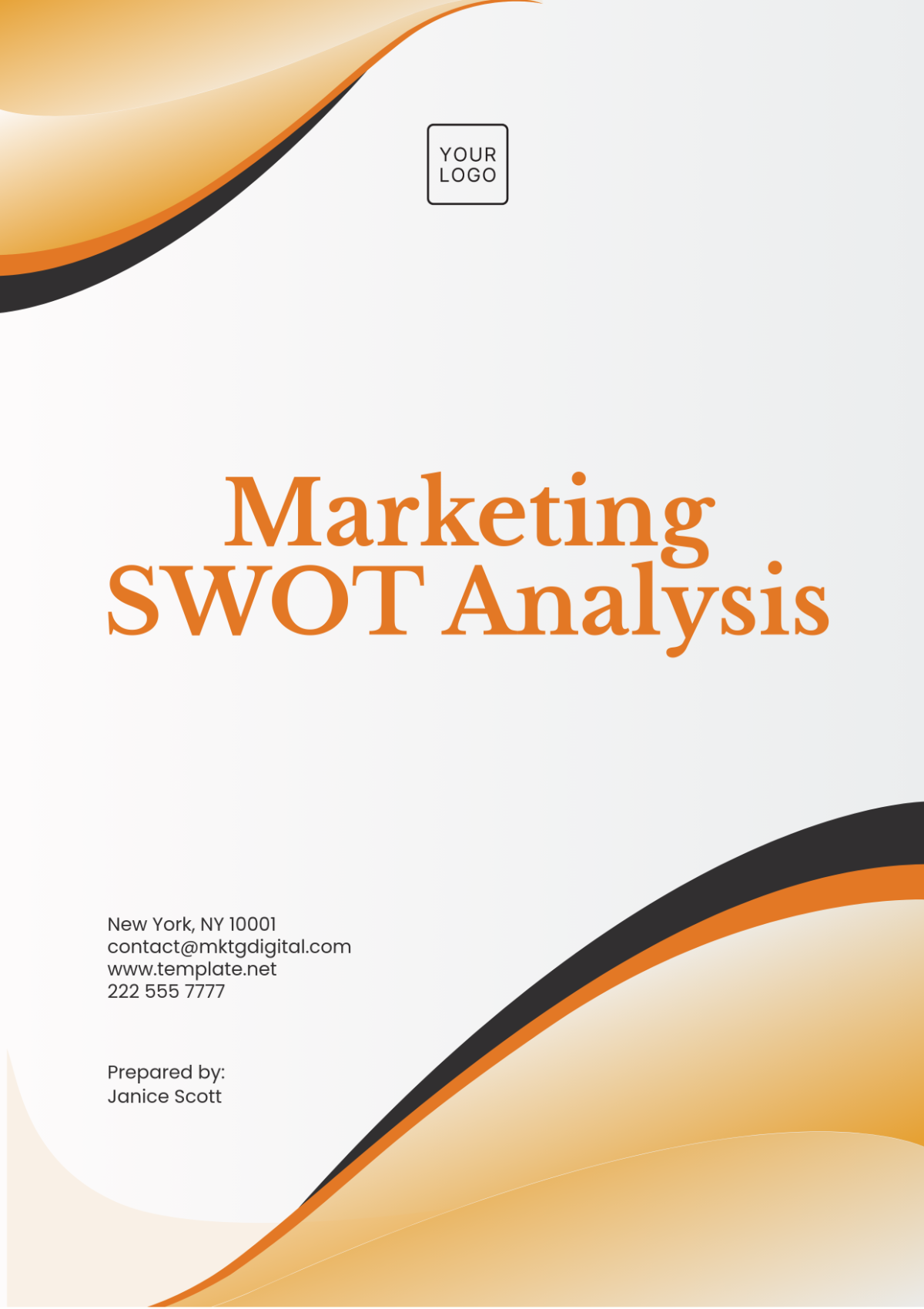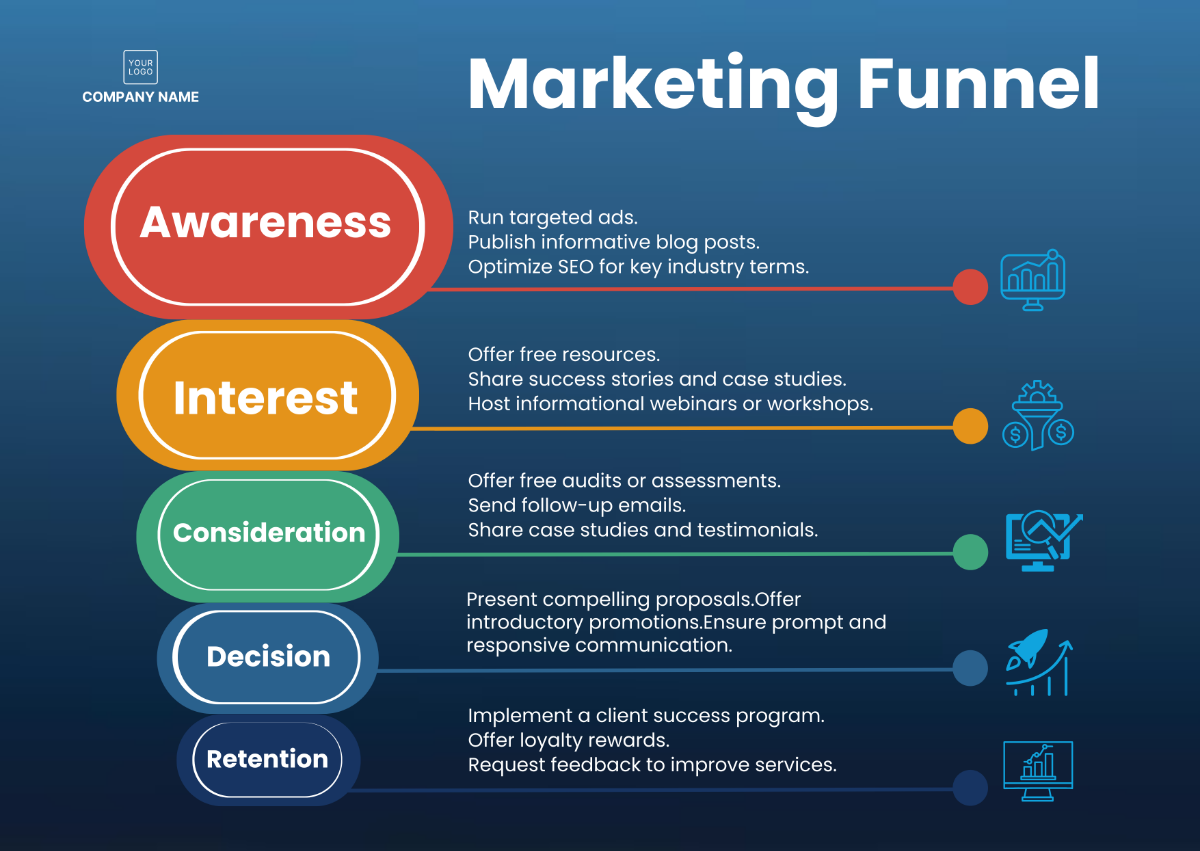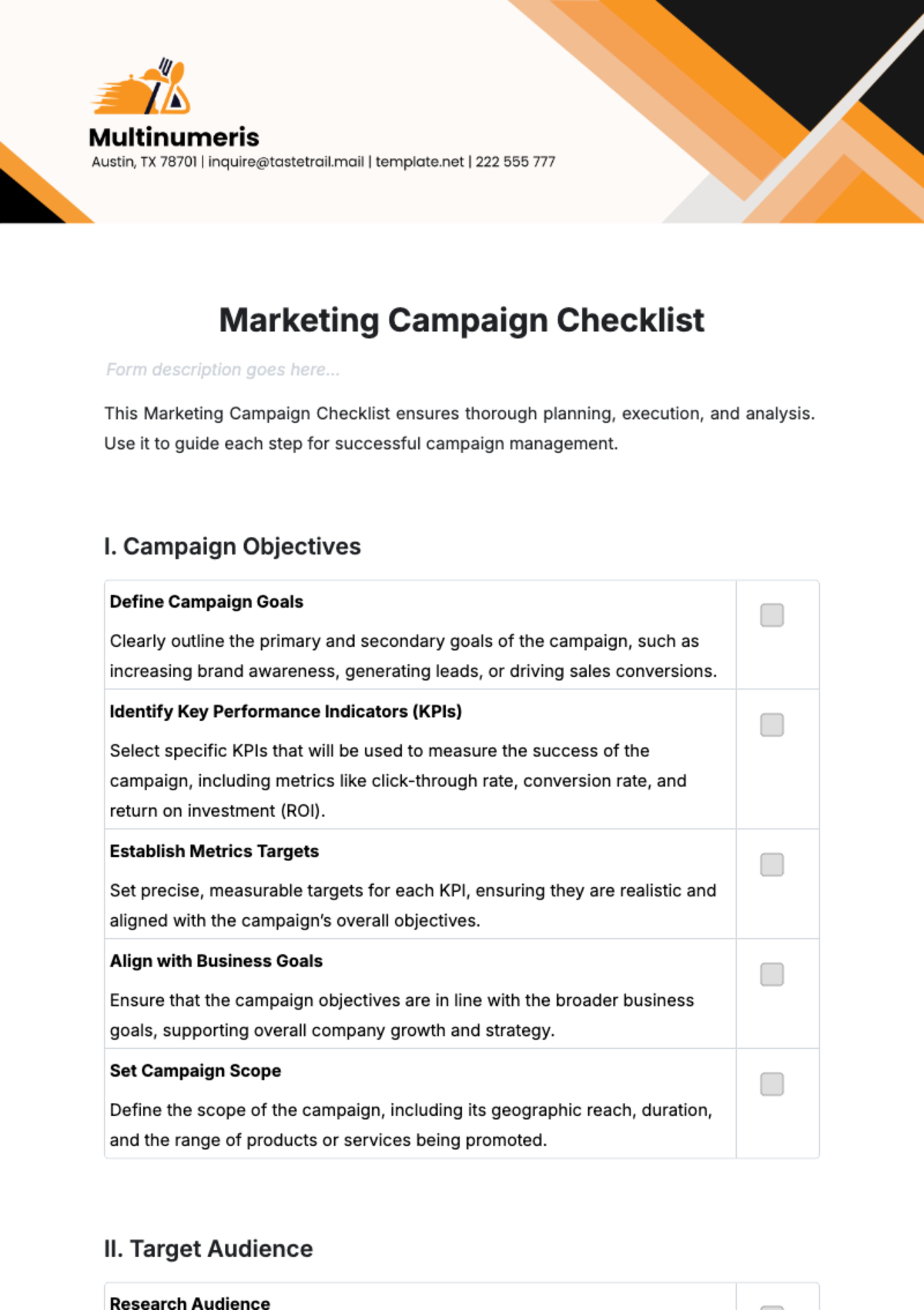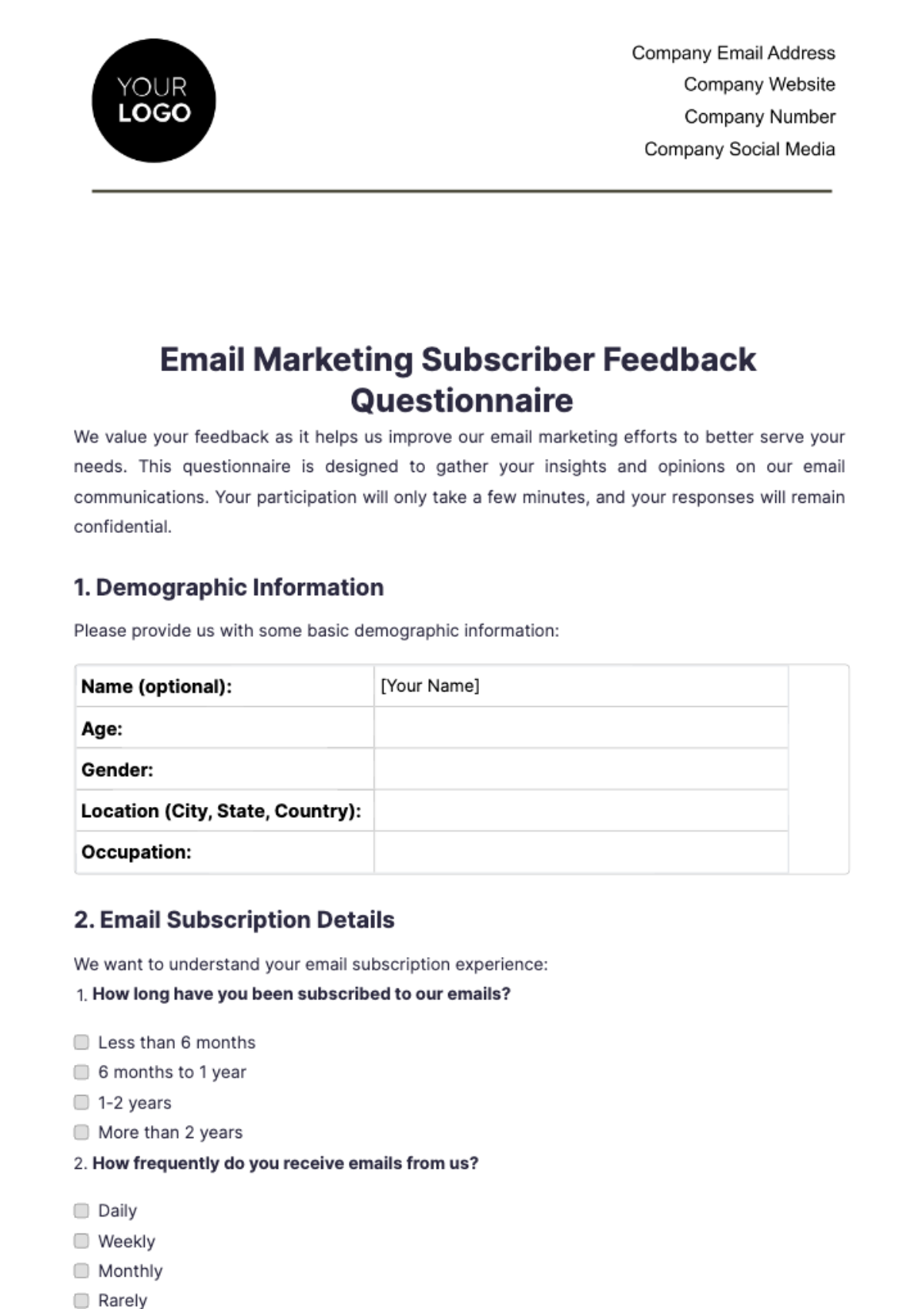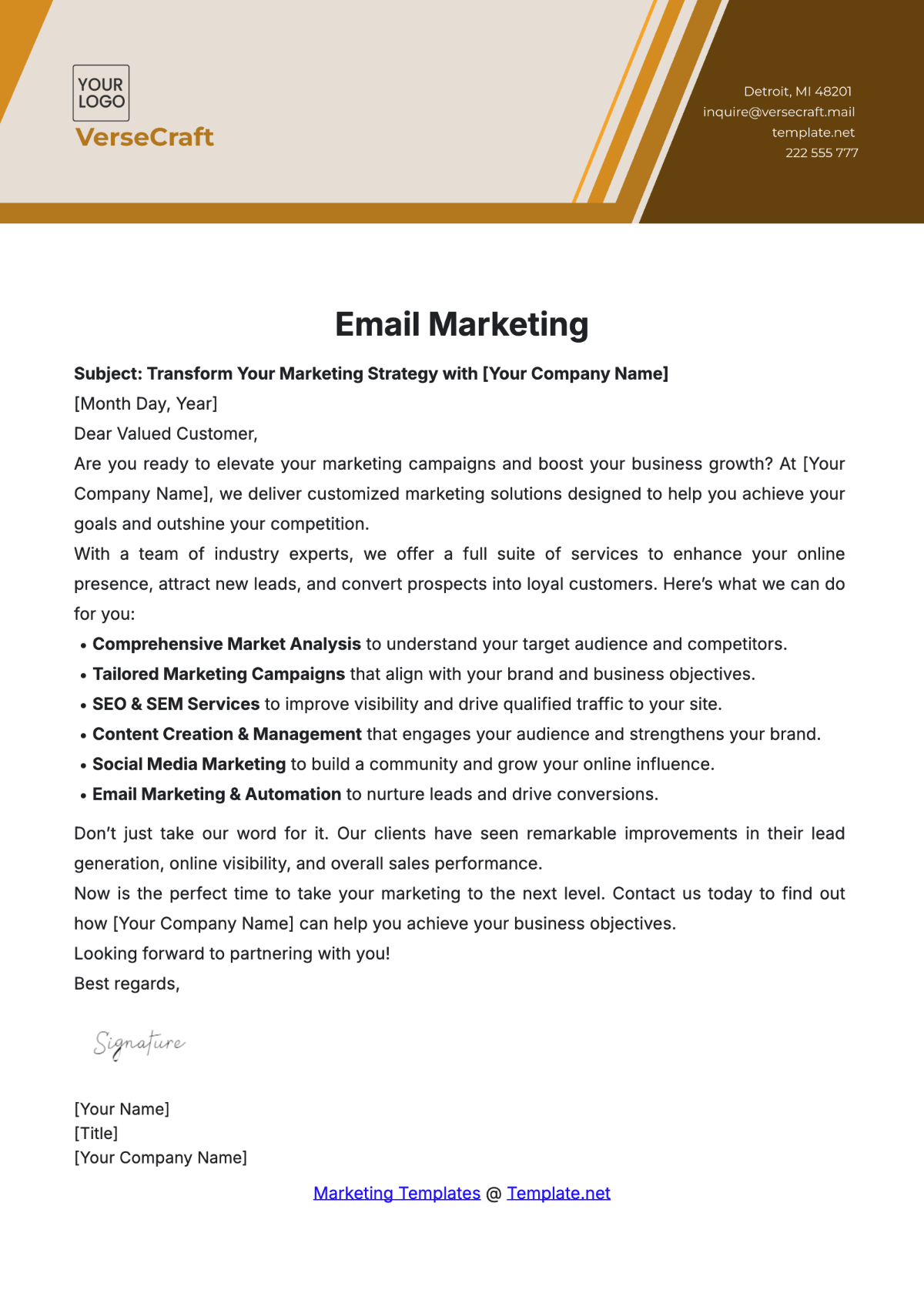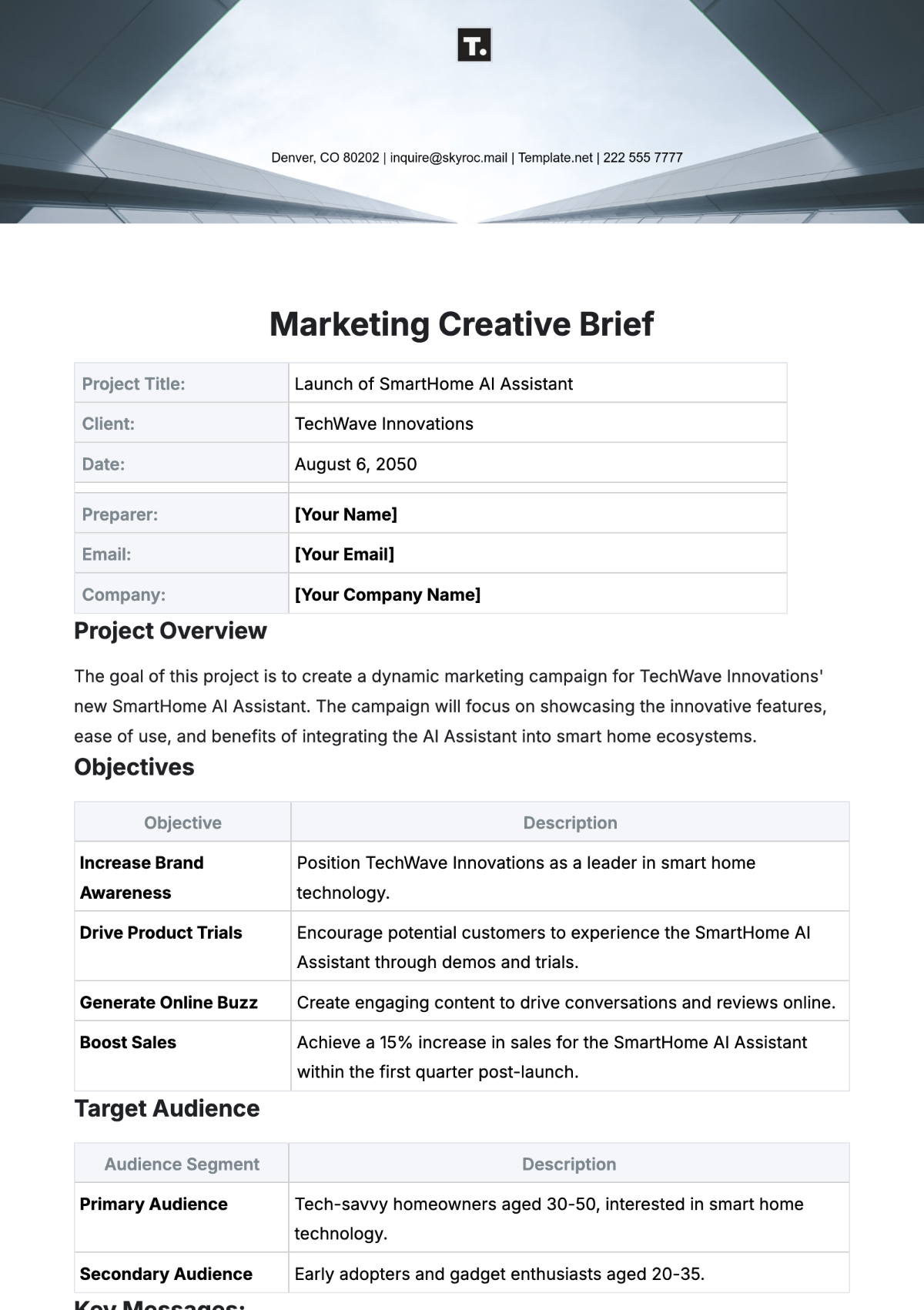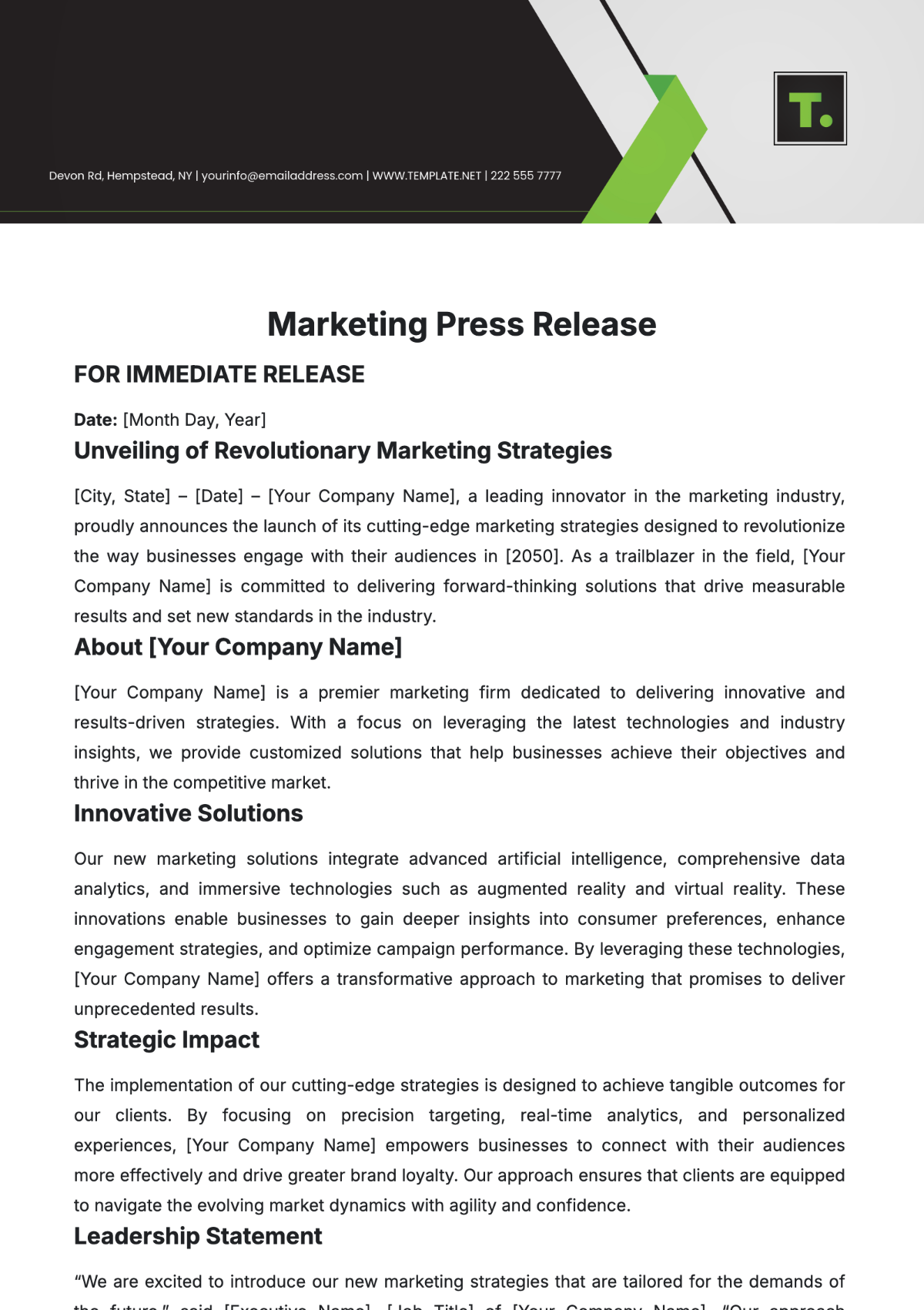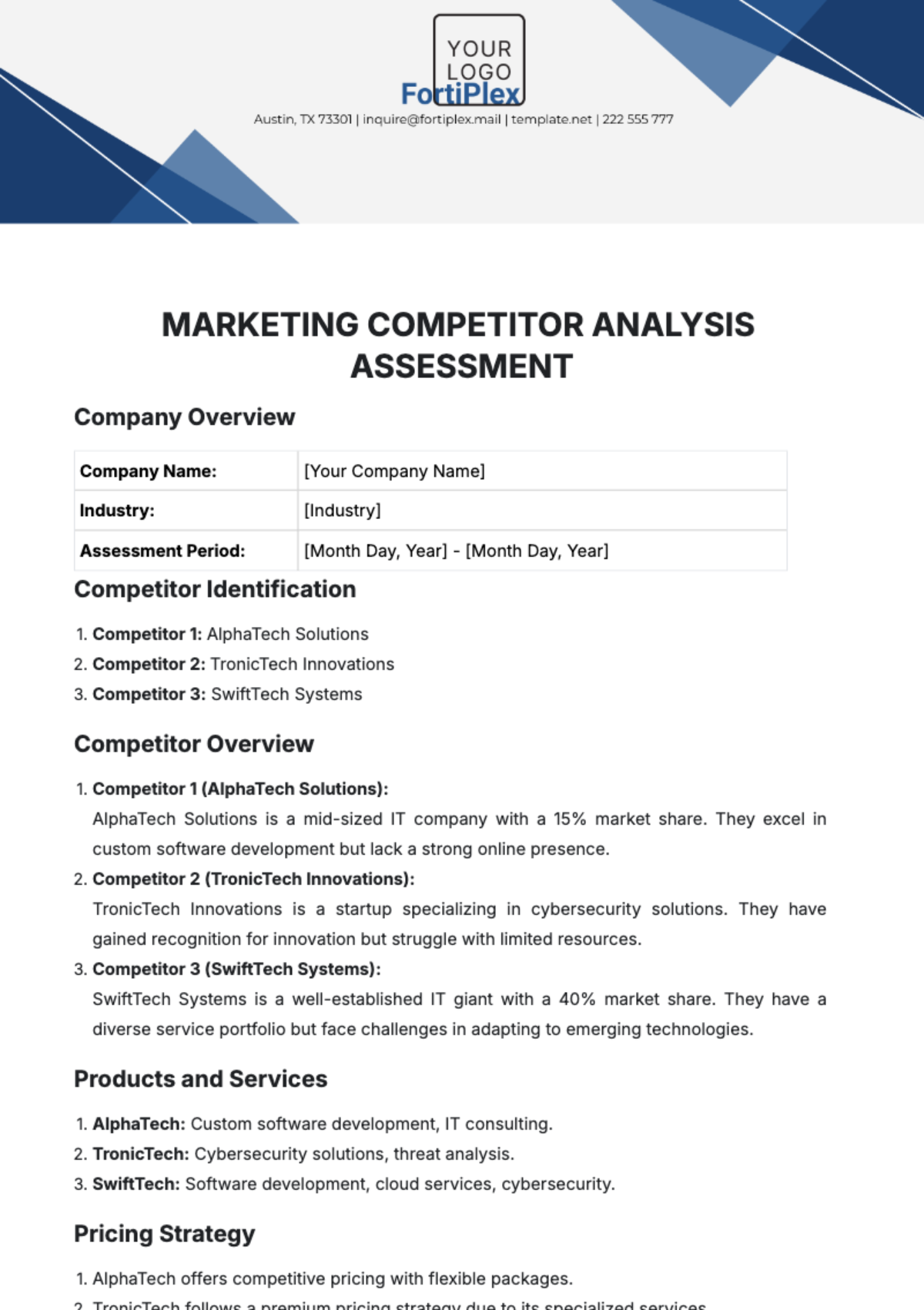Digital Marketing Case Study
Company: [Your Company Name]
Industry:
Marketing Manager: [Your Name]
Date: [Month Day, Year]
Executive Summary
In the executive summary, we highlight the success of [Your Company]' digital marketing campaign aimed at boosting online sales. Over the course of six months, the company managed to exceed its initial revenue target, increase brand visibility, and engage with a wider audience. This case study will delve into the strategies and tactics employed to achieve these results, offering valuable insights for future marketing initiatives.
Background
[Your Company Name], a prominent player in the consumer electronics industry, is globally renowned for its wide range of top-tier gadgets, including smartphones, tablets, and smart home devices. With a strong presence in both physical retail outlets and e-commerce platforms, the company had carved out a significant market share.
The primary business goals for [Your Company Name] were twofold: to elevate its online sales revenue and enhance its digital presence. In light of intensifying competition, the company sought to augment its brand's online visibility and customer engagement while extending its reach to specific demographics.
Increase online sales revenue by 30% within the next six months.
Improve brand awareness and engagement in the digital space.
Expand the customer base by targeting specific demographics.
Challenges
Identifying and elaborating on the challenges faced by the company is essential in illustrating the hurdles that the marketing team had to overcome. Before launching the digital marketing campaign,[Your Company Name] faced several challenges:
1. Intense Competition:
The consumer electronics industry had become fiercely competitive, characterized by numerous established giants and nimble newcomers aggressively competing for market dominance. Standing out in this crowded landscape was a formidable challenge for [Your Company Name].
2. Limited Online Presence:
Despite its reputation in the consumer electronics market, [Your Company Name] was struggling to match its online sales performance with that of its competitors. The company's digital footprint was relatively modest, lacking the online prominence needed to attract and convert potential customers.
3. Lack of Data-Driven Insights:
[Your Company Name] faced a critical data deficit. The company lacked comprehensive insights into its target audience, their preferences, and the efficacy of past digital marketing efforts. This absence of data-driven decision-making hindered their ability to develop and implement effective marketing strategies.
Strategy
This section outlines the comprehensive approach taken by [Your Company Name] to address the challenges and achieve the set goals. It provides an overview of the marketing tactics and channels employed during the campaign.
To surmount the challenges and reach its objectives, [Your Company Name] devised a multifaceted digital marketing strategy that hinged on the following key elements:
1. Customer Segmentation
Market research was conducted to gain a deeper understanding of the diverse customer segments. By categorizing customers based on demographics, behavior patterns, and preferences, [Your Company Name] could tailor marketing efforts to resonate more effectively with distinct audience groups.
2. SEO and Content Marketing
An extensive search engine optimization (SEO) strategy was implemented to enhance the company's organic search rankings. Simultaneously, the marketing team focused on creating high-quality, informative, and engaging content designed to attract, educate, and retain website visitors.
3. Paid Advertising
[Your Company Name] launched precisely targeted pay-per-click (PPC) advertising campaigns across platforms like Google Ads and various social media channels. These campaigns aimed to elevate brand visibility, generate website traffic, and drive online sales.
4. Email Marketing
Personalized email marketing campaigns were meticulously developed to nurture leads, promote customer loyalty, and stimulate repeat purchases. These campaigns featured tailored product recommendations, exclusive offers, and relevant content.
5. Social Media Marketing
To bolster brand awareness and engagement, [Your Company Name] actively engaged with its audience on various social media platforms. The marketing team consistently shared product updates, user-generated content, and conducted engaging contests to foster a vibrant online community.
Implementation
This section should detail the timeline and execution plan for the marketing campaign, outlining when each phase of the strategy was implemented.
The digital marketing campaign was executed in a phased approach:
A. Phase 1:
Customer Segmentation and Research (Month 1): In the initial phase, extensive market research was conducted to understand the target audience thoroughly. This laid the foundation for creating tailored marketing strategies.
B. Phase 2:
SEO and Content Marketing (Months 2-3): With customer segments identified, the focus shifted to SEO optimization and content creation. This two-month phase aimed to improve organic search rankings and enhance website content.
C. Phase 3:
Paid Advertising (Months 4-5): The subsequent phase involved launching and optimizing PPC advertising campaigns across various digital platforms to attract a wider audience.
D. Phase 4:
Email Marketing (Months 5-6): In the final stages, personalized email marketing campaigns were developed and deployed to nurture leads and encourage repeat purchases.
E. Phase 5:
Social Media Marketing (Ongoing): Throughout the entire campaign, the marketing team actively managed and engaged with the audience on social media platforms, fostering brand loyalty and driving organic growth.
Results
In this section, we will delve into the specific outcomes and achievements of the digital marketing campaign conducted by [Your Company Name]. The results demonstrate the effectiveness of the strategies and tactics implemented during the campaign, highlighting the positive impact on the company's performance.
Key Performance Indicators (KPIs)
Here are the key performance indicators (KPIs) that were tracked to measure the success of the digital marketing campaign:
1. Online Sales Revenue
Goal: Increase online sales revenue by 30% within six months.
Outcome: Online sales revenue witnessed a remarkable growth of 35% over the course of the campaign, surpassing the initial target.
2. Website Traffic
Goal: Improve website traffic to boost brand visibility.
Outcome: Website traffic surged by an impressive 45% during the campaign period. This increase in website visitors can be directly attributed to the enhanced SEO and paid advertising efforts.
3. Email Engagement
Goal: Enhance email engagement rates, including open rates and click-through rates.
Outcome: Email engagement metrics improved significantly, with open rates increasing by 20% and click-through rates showing a 15% improvement. These results indicate that the personalized email marketing campaigns effectively resonated with the audience.
4. Social Media Followers
Goal: Expand the social media following to foster a more engaged community.
Outcome: [Your Company Name] gained 25% more followers across its social media platforms. This growth reflects increased brand awareness and a more engaged online community.
5. Return on Investment (ROI)
Goal: Achieve a positive return on investment, with a target ROI of 3.0.
Outcome: The campaign achieved an impressive ROI of 4.5, surpassing the initial target. This indicates that the marketing strategies employed were not only effective but also financially prudent.
Tabulated Summary of Results
KPI | Initial Goal | Actual Outcome |
Online Sales Revenue | +30% | +35% |
Website Traffic | Improved | +45% |
Email Open Rates | Increased | +20% |
Email Click-Through Rates | Improved | +15% |
Social Media Followers | Increased | +25% |
ROI | ≥3.0 | 4.5 |
These results highlight the success of the digital marketing campaign in achieving its primary objectives. The campaign not only exceeded revenue targets but also significantly improved brand visibility, customer engagement, and the overall return on investment.
The positive outcomes serve as a testament to the effectiveness of the data-driven marketing strategies employed by [Your Company Name] and provide valuable insights for future marketing endeavors.
Conclusion
The digital marketing campaign executed by [Your Company Name] has yielded remarkable results, underscoring the power of data-driven decision-making, strategic planning, and the seamless execution of marketing initiatives. Through this campaign, the company successfully addressed challenges, surpassed its goals, and achieved substantial growth across multiple key performance indicators.
Achieving Business Objectives
The primary objective of this campaign was to boost online sales revenue, and it did so with flying colors. The campaign not only met but exceeded the revenue target, achieving a remarkable 35% increase in online sales. This achievement demonstrates the direct impact of well-planned digital marketing strategies on the bottom line.
Enhancing Digital Presence
In a digital landscape saturated with competitors, [Your Company Name] faced the challenge of limited online visibility. However, by implementing a robust SEO strategy, content marketing initiatives, and paid advertising campaigns, the company witnessed a substantial 45% increase in website traffic. This improvement not only enhanced brand visibility but also exposed the brand to a wider audience.
Engaging with the Audience
Engaging with the audience was a core focus of the campaign. The remarkable results in email marketing, with open rates surging by 20% and click-through rates increasing by 15%, clearly indicate that the personalized email campaigns resonated with the target audience. Additionally, a 25% growth in social media followers highlights the success of the social media engagement efforts, fostering a more vibrant online community around the brand.
Proving ROI
One of the most impressive outcomes of the campaign was the return on investment (ROI) achieved. With a target ROI of 3.0, the campaign exceeded expectations, attaining an impressive ROI of 4.5. This demonstrates not only the effectiveness of the strategies but also their cost-efficiency, as every marketing dollar invested resulted in a substantial return.
Lessons for the Future
This case study serves as a valuable blueprint for future digital marketing endeavors within [Your Company Name]. The success of this campaign underscores the importance of:
1. Data-Driven Decision-Making:
Informed by thorough market research and customer segmentation, the campaign demonstrated that data-driven insights are crucial in crafting effective strategies.
2. Comprehensive Strategy:
The phased approach, encompassing SEO, content marketing, paid advertising, email marketing, and social media engagement, showcased the power of a holistic marketing strategy.
3. Continuous Monitoring and Adaptation:
Ongoing analysis and optimization were integral to the campaign's success. This iterative approach allowed the marketing team to adapt quickly to changing market dynamics and consumer preferences.
Future Growth Prospects
With these remarkable results, [Your Company Name] is now well-positioned for continued growth in the digital landscape. The insights gained from this campaign will inform future marketing initiatives and help the company maintain its competitive edge in the consumer electronics industry.
In conclusion, the [Your Company Name] digital marketing campaign exemplifies the potential of strategic digital marketing in a competitive industry. By addressing challenges, targeting specific audience segments, and leveraging various digital marketing channels, the company not only met but exceeded its goals. This case study stands as a testament to the effectiveness of data-driven, comprehensive marketing strategies in driving business success.
[Your Company Name] is now poised for further digital growth, and this case study serves as a valuable reference for the company's future marketing endeavors, emphasizing the importance of adaptability, customer-centricity, and data-driven decision-making in achieving lasting success.


